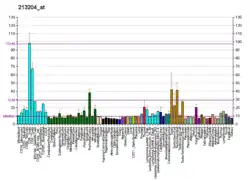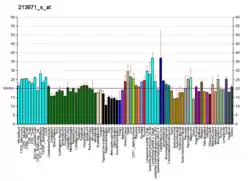| CUL9 | |||||||||||||||||||||||||||||||||||||||||||||||||||
|---|---|---|---|---|---|---|---|---|---|---|---|---|---|---|---|---|---|---|---|---|---|---|---|---|---|---|---|---|---|---|---|---|---|---|---|---|---|---|---|---|---|---|---|---|---|---|---|---|---|---|---|
| |||||||||||||||||||||||||||||||||||||||||||||||||||
| Identifiers | |||||||||||||||||||||||||||||||||||||||||||||||||||
| Aliases | CUL9, H7AP1, PARC, 1810035I07Rik, Cul-9, mKIAA0708, cullin 9 | ||||||||||||||||||||||||||||||||||||||||||||||||||
| External IDs | OMIM: 607489 MGI: 1925559 HomoloGene: 56696 GeneCards: CUL9 | ||||||||||||||||||||||||||||||||||||||||||||||||||
| |||||||||||||||||||||||||||||||||||||||||||||||||||
| |||||||||||||||||||||||||||||||||||||||||||||||||||
| |||||||||||||||||||||||||||||||||||||||||||||||||||
| |||||||||||||||||||||||||||||||||||||||||||||||||||
| |||||||||||||||||||||||||||||||||||||||||||||||||||
| Wikidata | |||||||||||||||||||||||||||||||||||||||||||||||||||
| |||||||||||||||||||||||||||||||||||||||||||||||||||
Cullin-9 is a protein that in humans is encoded by the CUL9 gene.[5][6][7][8]
Interactions
References
- 1 2 3 GRCh38: Ensembl release 89: ENSG00000112659 - Ensembl, May 2017
- 1 2 3 GRCm38: Ensembl release 89: ENSMUSG00000040327 - Ensembl, May 2017
- ↑ "Human PubMed Reference:". National Center for Biotechnology Information, U.S. National Library of Medicine.
- ↑ "Mouse PubMed Reference:". National Center for Biotechnology Information, U.S. National Library of Medicine.
- ↑ Skaar JR, Florens L, Tsutsumi T, Arai T, Tron A, Swanson SK, Washburn MP, DeCaprio JA (Mar 2007). "PARC and CUL7 form atypical cullin RING ligase complexes". Cancer Res. 67 (5): 2006–14. doi:10.1158/0008-5472.CAN-06-3241. PMID 17332328.
- ↑ Moynihan TP, Ardley HC, Nuber U, Rose SA, Jones PF, Markham AF, Scheffner M, Robinson PA (Nov 1999). "The ubiquitin-conjugating enzymes UbcH7 and UbcH8 interact with RING finger/IBR motif-containing domains of HHARI and H7-AP1". J Biol Chem. 274 (43): 30963–8. doi:10.1074/jbc.274.43.30963. PMID 10521492.
- 1 2 Nikolaev AY, Li M, Puskas N, Qin J, Gu W (Jan 2003). "Parc: a cytoplasmic anchor for p53". Cell. 112 (1): 29–40. doi:10.1016/S0092-8674(02)01255-2. PMID 12526791. S2CID 18403676.
- ↑ "Entrez Gene: PARC p53-associated parkin-like cytoplasmic protein".
Further reading
- Ishikawa K, Nagase T, Suyama M, et al. (1998). "Prediction of the coding sequences of unidentified human genes. X. The complete sequences of 100 new cDNA clones from brain which can code for large proteins in vitro". DNA Res. 5 (3): 169–76. doi:10.1093/dnares/5.3.169. PMID 9734811.
- Nakayama M, Kikuno R, Ohara O (2003). "Protein–Protein Interactions Between Large Proteins: Two-Hybrid Screening Using a Functionally Classified Library Composed of Long cDNAs". Genome Res. 12 (11): 1773–84. doi:10.1101/gr.406902. PMC 187542. PMID 12421765.
- Strausberg RL, Feingold EA, Grouse LH, et al. (2003). "Generation and initial analysis of more than 15,000 full-length human and mouse cDNA sequences". Proc. Natl. Acad. Sci. U.S.A. 99 (26): 16899–903. Bibcode:2002PNAS...9916899M. doi:10.1073/pnas.242603899. PMC 139241. PMID 12477932.
- Ota T, Suzuki Y, Nishikawa T, et al. (2004). "Complete sequencing and characterization of 21,243 full-length human cDNAs". Nat. Genet. 36 (1): 40–5. doi:10.1038/ng1285. PMID 14702039.
- Gerhard DS, Wagner L, Feingold EA, et al. (2004). "The Status, Quality, and Expansion of the NIH Full-Length cDNA Project: The Mammalian Gene Collection (MGC)". Genome Res. 14 (10B): 2121–7. doi:10.1101/gr.2596504. PMC 528928. PMID 15489334.
- Issaeva N, Bozko P, Enge M, et al. (2005). "Small molecule RITA binds to p53, blocks p53-HDM-2 interaction and activates p53 function in tumors". Nat. Med. 10 (12): 1321–8. doi:10.1038/nm1146. PMID 15558054. S2CID 82043.
- Ko HS, Kim SW, Sriram SR, et al. (2006). "Identification of far upstream element-binding protein-1 as an authentic Parkin substrate". J. Biol. Chem. 281 (24): 16193–6. doi:10.1074/jbc.C600041200. PMID 16672220.
- Kaustov L, Lukin J, Lemak A, et al. (2007). "The conserved CPH domains of Cul7 and PARC are protein-protein interaction modules that bind the tetramerization domain of p53". J. Biol. Chem. 282 (15): 11300–7. doi:10.1074/jbc.M611297200. PMID 17298945.
This article is issued from Wikipedia. The text is licensed under Creative Commons - Attribution - Sharealike. Additional terms may apply for the media files.





